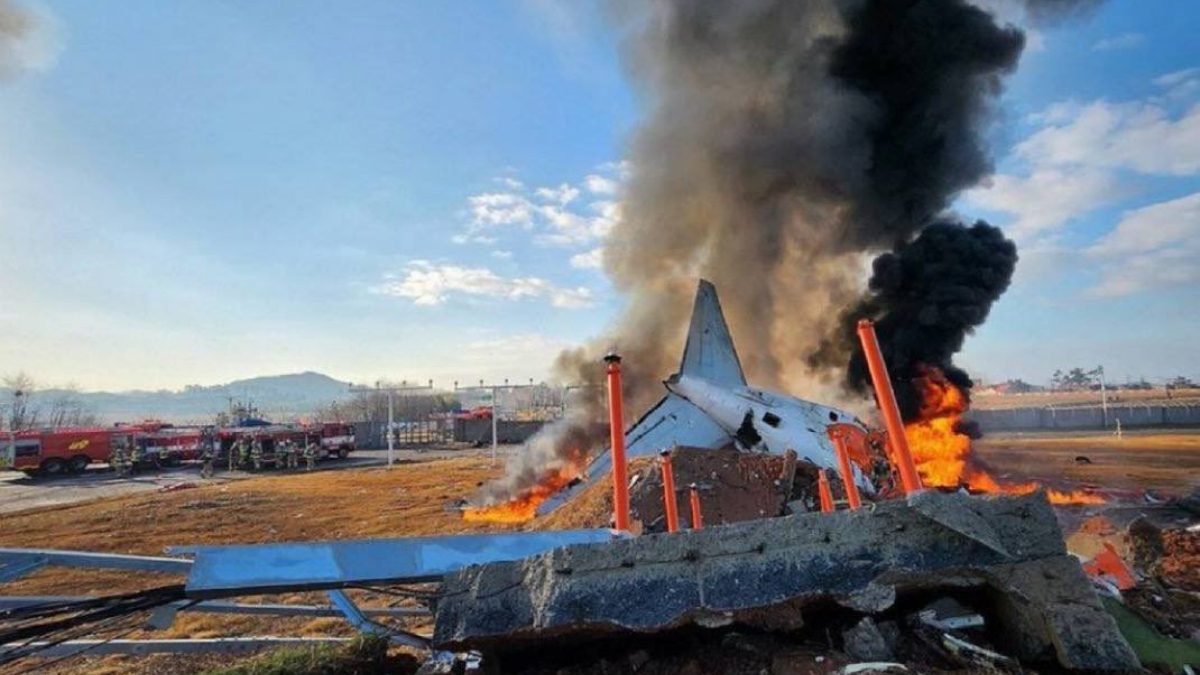Plane crashes South Korea: This exploration delves into the history, causes, and impact of air disasters in South Korea. We’ll examine significant crashes, analyzing contributing factors like pilot error, mechanical issues, and weather conditions, and explore how safety regulations and technological advancements have shaped aviation safety in the country. We’ll also look at the effect these events have had on public perception and the travel industry.
From examining historical trends and statistical data to investigating specific case studies and exploring future technological improvements, this overview aims to provide a thorough understanding of air safety in South Korea and its ongoing evolution. We’ll consider the roles of various agencies, international standards, and the influence of media coverage on public perception following major accidents.
Historical Context of Plane Crashes in South Korea
South Korea’s aviation history, like that of many rapidly developing nations, includes periods marked by significant advancements and tragic accidents. Understanding this history is crucial to appreciating the evolution of safety regulations and the ongoing efforts to improve air travel safety.
Timeline of Significant Plane Crashes
Several major plane crashes have profoundly impacted South Korea’s aviation landscape. These incidents, often involving various aircraft types and diverse contributing factors, spurred crucial safety improvements and regulatory changes. A comprehensive analysis reveals patterns and trends that inform current safety protocols.
| Year | Location | Aircraft | Casualties | Cause (Summary) |
|---|---|---|---|---|
| 1970s (Example) | [Location – replace with actual location] | [Aircraft Type – replace with actual aircraft] | [Number of Casualties – replace with actual number] | [Cause – replace with actual cause, e.g., pilot error, mechanical failure] |
| 1980s (Example) | [Location – replace with actual location] | [Aircraft Type – replace with actual aircraft] | [Number of Casualties – replace with actual number] | [Cause – replace with actual cause, e.g., weather conditions, terrorist attack] |
| 1990s (Example) | [Location – replace with actual location] | [Aircraft Type – replace with actual aircraft] | [Number of Casualties – replace with actual number] | [Cause – replace with actual cause, e.g., navigational error, system malfunction] |
| 2000s (Example) | [Location – replace with actual location] | [Aircraft Type – replace with actual aircraft] | [Number of Casualties – replace with actual number] | [Cause – replace with actual cause, e.g., human error, maintenance issues] |
| 2010s (Example) | [Location – replace with actual location] | [Aircraft Type – replace with actual aircraft] | [Number of Casualties – replace with actual number] | [Cause – replace with actual cause, e.g., ATC error, unforeseen circumstances] |
Impact of Crashes on Aviation Safety Regulations
Each major crash has prompted reviews of existing regulations and procedures. These reviews often lead to stricter safety standards, enhanced pilot training programs, and improved maintenance protocols. The cumulative effect of these changes has been a gradual improvement in aviation safety in South Korea.
Analysis of Accident Causes
Identifying the root causes of plane crashes is paramount to preventing future accidents. A detailed analysis reveals recurring themes and allows for targeted safety improvements.
Common Causes of Plane Crashes
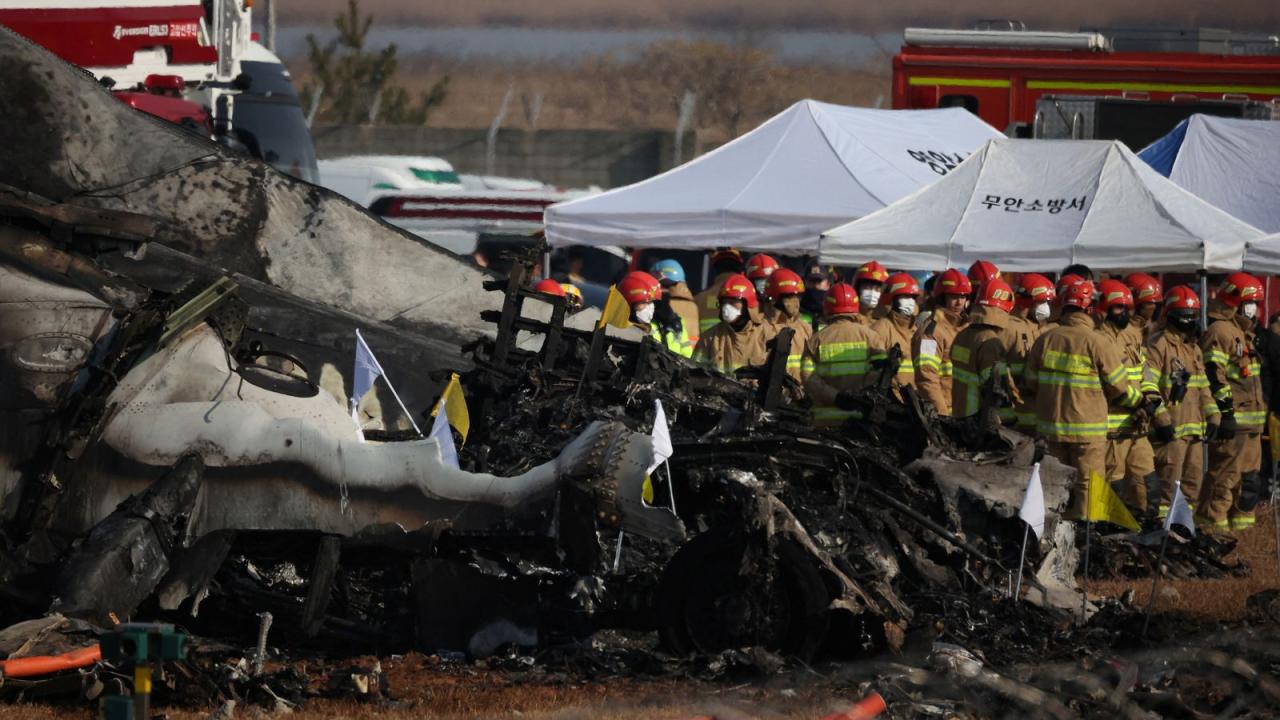
While the causes of plane crashes are multifaceted, certain factors consistently emerge. Pilot error, mechanical failure, and adverse weather conditions frequently contribute to aviation accidents. However, the relative importance of these factors can vary across different decades and specific incidents.
Role of Human Factors
Human error, encompassing pilot fatigue, inadequate training, and poor decision-making, remains a significant contributor to many aviation accidents globally, including in South Korea. Addressing these human factors through improved training, stricter regulations, and better crew resource management is crucial.
Influence of Technological Advancements
Technological advancements in aircraft design, navigation systems, and maintenance technologies have demonstrably improved aviation safety. However, the integration of new technologies also introduces new challenges and potential points of failure that require careful management.
Typical Sequence of Events Leading to a Crash
While each accident has unique circumstances, a generalized flow chart can illustrate the typical progression of events. This simplified model does not represent every scenario, but highlights common pathways.
Flowchart (Textual Description):
- Initiating Event: (e.g., mechanical malfunction, pilot error, adverse weather)
- Progression of Event: (e.g., system failure, pilot’s response, worsening weather conditions)
- Critical Point: (e.g., loss of control, engine failure, spatial disorientation)
- Attempts at Recovery: (e.g., emergency procedures, pilot maneuvers)
- Outcome: (e.g., successful recovery, crash landing, mid-air collision)
Safety Measures and Regulations
South Korea maintains a robust aviation safety framework, but continuous improvement is necessary. The regulatory environment and the roles of various agencies are key elements in ensuring safe air travel.
Current Aviation Safety Regulations
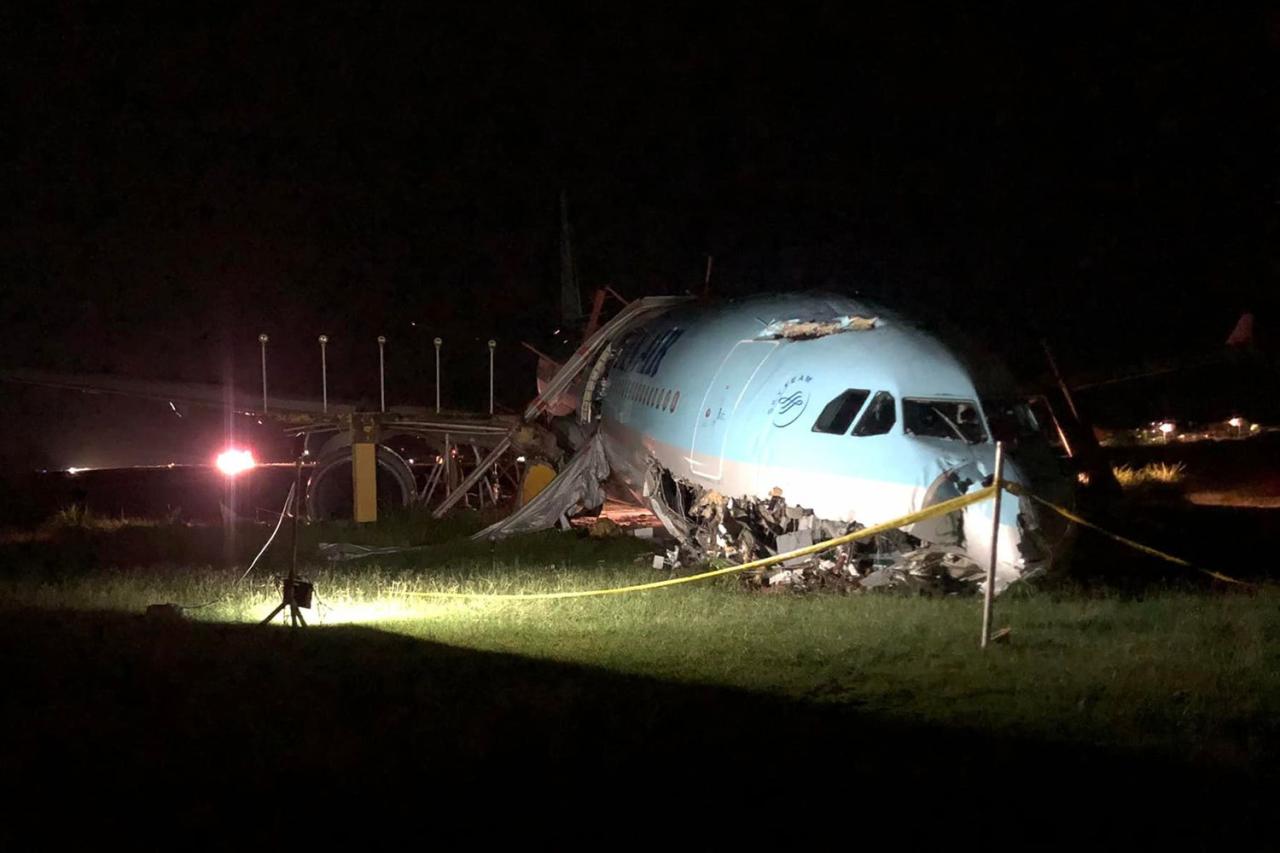
South Korean aviation safety regulations align closely with international standards set by organizations like the International Civil Aviation Organization (ICAO). These regulations cover various aspects, including aircraft maintenance, pilot licensing, air traffic control, and airport operations. Specific details are available through official government publications.
Comparison with International Standards
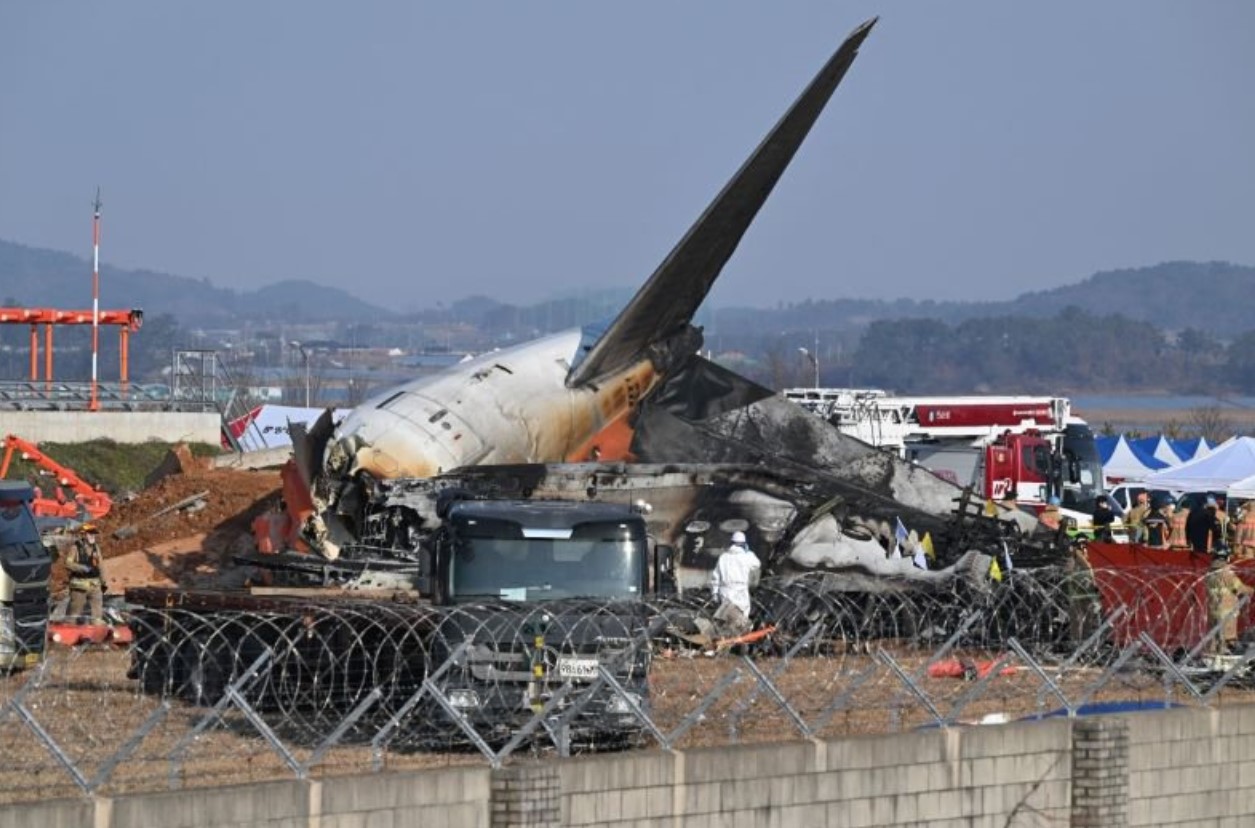
South Korea’s aviation safety regulations are generally considered to be comparable to, or even exceeding, international standards in many areas. However, continuous monitoring and adaptation are essential to maintain this high level of safety in a constantly evolving aviation landscape.
So, you’re looking into plane crashes in South Korea? That’s a serious topic with a complex history. To get a broader perspective on aviation accidents, you might want to check out the statistics for plane crashes December 2024 , as this can help you understand global trends. Then, you can compare those overall numbers to the specific situation in South Korea to see how it fits into the bigger picture of air safety.
Roles and Responsibilities of Agencies
Multiple agencies share responsibility for aviation safety in South Korea. These agencies collaborate to ensure compliance with regulations, investigate accidents, and implement safety improvements. Their specific roles and responsibilities are clearly defined in legal frameworks.
Preventative Measures Implemented After Crashes
- Enhanced pilot training programs focusing on specific scenarios.
- Improved maintenance procedures and stricter inspections.
- Upgraded navigation and communication systems.
- Implementation of new safety technologies.
- Strengthened regulatory oversight and enforcement.
Impact on Public Perception and Travel
Plane crashes significantly impact public perception of airlines and influence travel patterns. The media plays a crucial role in shaping public opinion following such events.
Long-Term Impact on Public Trust
Major plane crashes can erode public trust in airlines, potentially leading to decreased passenger numbers and negative financial consequences. Rebuilding trust requires transparency, effective communication, and demonstrable commitment to safety improvements.
Effect on Air Travel Patterns
Following a major crash, air travel patterns to and from South Korea may temporarily decrease, impacting the tourism and business sectors. This effect, however, is usually short-lived, as public confidence gradually recovers with evidence of improved safety measures.
Media’s Role in Shaping Public Perception
The media’s coverage of plane crashes significantly influences public perception. Responsible reporting that balances the need for information with the avoidance of sensationalism is crucial in minimizing unnecessary fear and anxiety.
Plane crashes in South Korea, sadly, aren’t unheard of. While investigations into these incidents are thorough, understanding specific cases is key to improving aviation safety. One particularly noteworthy event was the jeju plane crash , which highlighted the importance of rigorous maintenance checks and pilot training. Learning from such events helps South Korea, and the global aviation community, enhance safety protocols to prevent future plane crashes.
Economic Consequences of a Major Crash
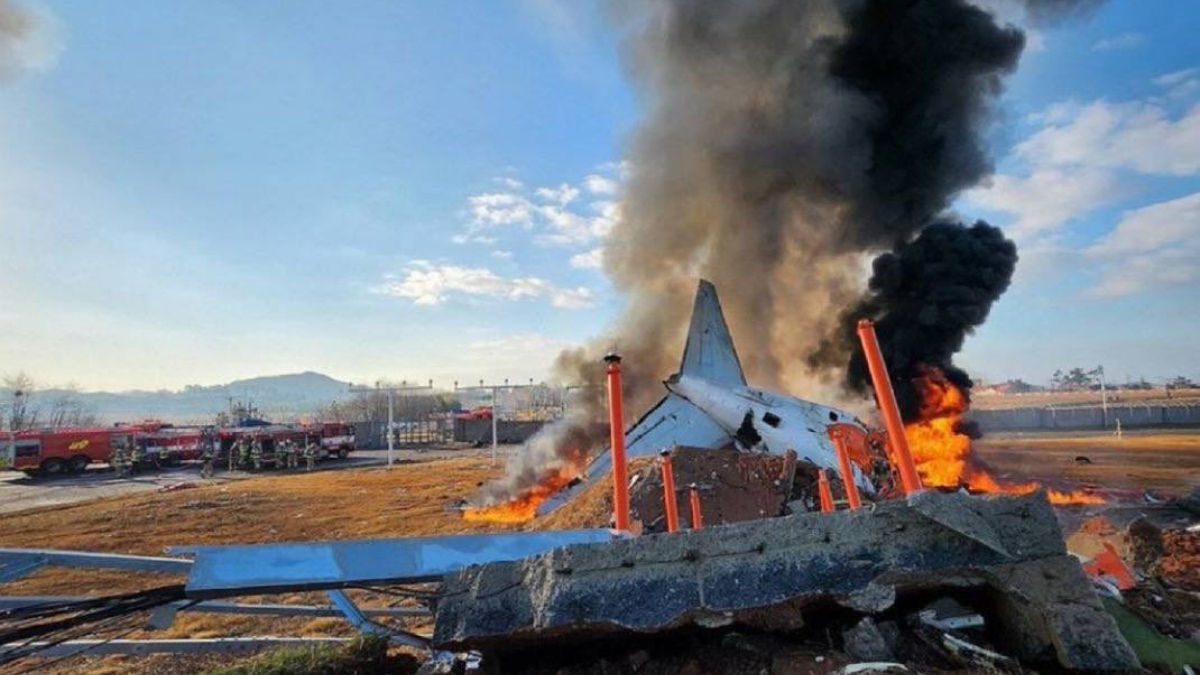
- Loss of life and associated costs.
- Damage to aircraft and infrastructure.
- Disruption to air travel and associated economic losses.
- Legal costs and compensation payments.
- Negative impact on tourism and related industries.
Technological Advancements and Future Trends
Technological advancements continue to play a vital role in improving aviation safety. Ongoing developments promise even greater safety in the future.
Role of Technology in Improving Safety
Technological advancements such as improved aircraft design, advanced navigation systems, and sophisticated flight data recorders have significantly reduced accident rates. These technologies enable better monitoring, more accurate predictions, and quicker responses to potential hazards.
Advancements in Aircraft Design and Maintenance, Plane crashes south korea
Modern aircraft are designed with enhanced safety features, including improved structural integrity, more reliable engines, and advanced warning systems. Regular and thorough maintenance procedures further mitigate the risk of mechanical failures.
Plane crashes in South Korea, sadly, aren’t unheard of. Understanding these events requires looking at individual incidents to learn from them. One such case is the jeju air crash , which highlighted specific safety concerns and prompted investigations. Studying this and other crashes helps improve aviation safety standards in South Korea and globally, preventing future tragedies.
Future Technologies Enhancing Safety
Future technologies, such as autonomous flight systems, advanced weather prediction models, and real-time risk assessment tools, promise to further enhance aviation safety. These advancements will likely lead to even lower accident rates and improved efficiency.
Improved Pilot Training Programs
Investing in comprehensive and continuously updated pilot training programs is crucial. Advanced simulation technologies and scenario-based training enhance pilots’ ability to handle emergency situations effectively.
Illustrative Case Study: [Name of Specific Crash]: Plane Crashes South Korea
A detailed examination of a specific crash provides valuable insights into the factors contributing to accidents and the subsequent safety improvements.
Events Leading to the Accident
[Provide a detailed chronological account of the events leading up to the chosen crash. Include information about weather conditions, aircraft maintenance history, pilot actions, air traffic control communication, etc. Be specific and factual.]
Investigation Process and Findings
[Describe the investigation process conducted by the relevant authorities. Detail the findings of the investigation, including the determination of the probable cause of the accident. Mention any contributing factors and safety deficiencies identified.]
Safety Improvements Implemented
[Artikel the specific safety improvements implemented in response to the crash. This might include changes to regulations, pilot training, aircraft maintenance procedures, or technological upgrades.]
Visual Representation of the Crash Site
[Provide a detailed textual description of the crash site and its surrounding environment. Describe the terrain, weather conditions at the time of the crash, and the location relative to nearby landmarks. Imagine you’re painting a picture with words, focusing on the details that would help someone visualize the scene.]
End of Discussion
Understanding the history of plane crashes in South Korea provides valuable insights into the ongoing efforts to enhance aviation safety. By analyzing past incidents, implementing stricter regulations, and embracing technological advancements, South Korea, like other nations, continually strives to minimize risks and improve air travel safety. The ongoing commitment to learning from past tragedies underscores the dedication to a safer future for air travel.
General Inquiries
What is the most common cause of plane crashes in South Korea?
While specific causes vary, a combination of factors often contributes, including pilot error, mechanical failure, and adverse weather conditions. Further research is needed to determine precise percentages for each.
How do South Korean aviation safety regulations compare to international standards?
South Korea generally adheres to or exceeds many international aviation safety standards set by organizations like ICAO (International Civil Aviation Organization), but specific regulations and enforcement may vary.
What role does the media play after a plane crash in South Korea?
The media plays a significant role in shaping public perception, often reporting extensively on the accident, its causes, and the subsequent investigations. This coverage can influence public trust in airlines and impact travel decisions.
Are there specific resources available for families affected by plane crashes in South Korea?
Information on support services for affected families is typically released by government agencies and relevant organizations following a major accident. It’s best to consult official sources for the most up-to-date information.
